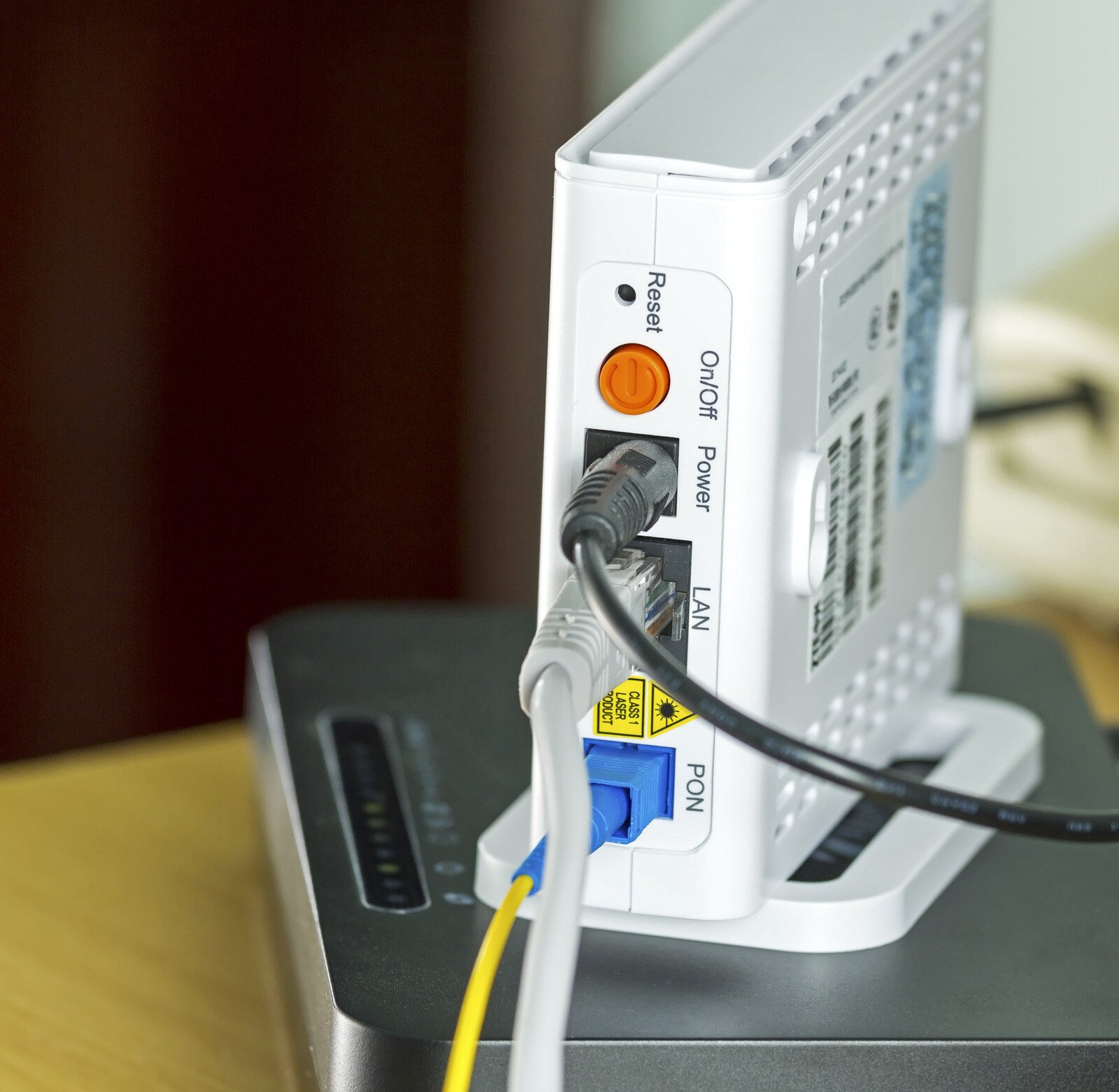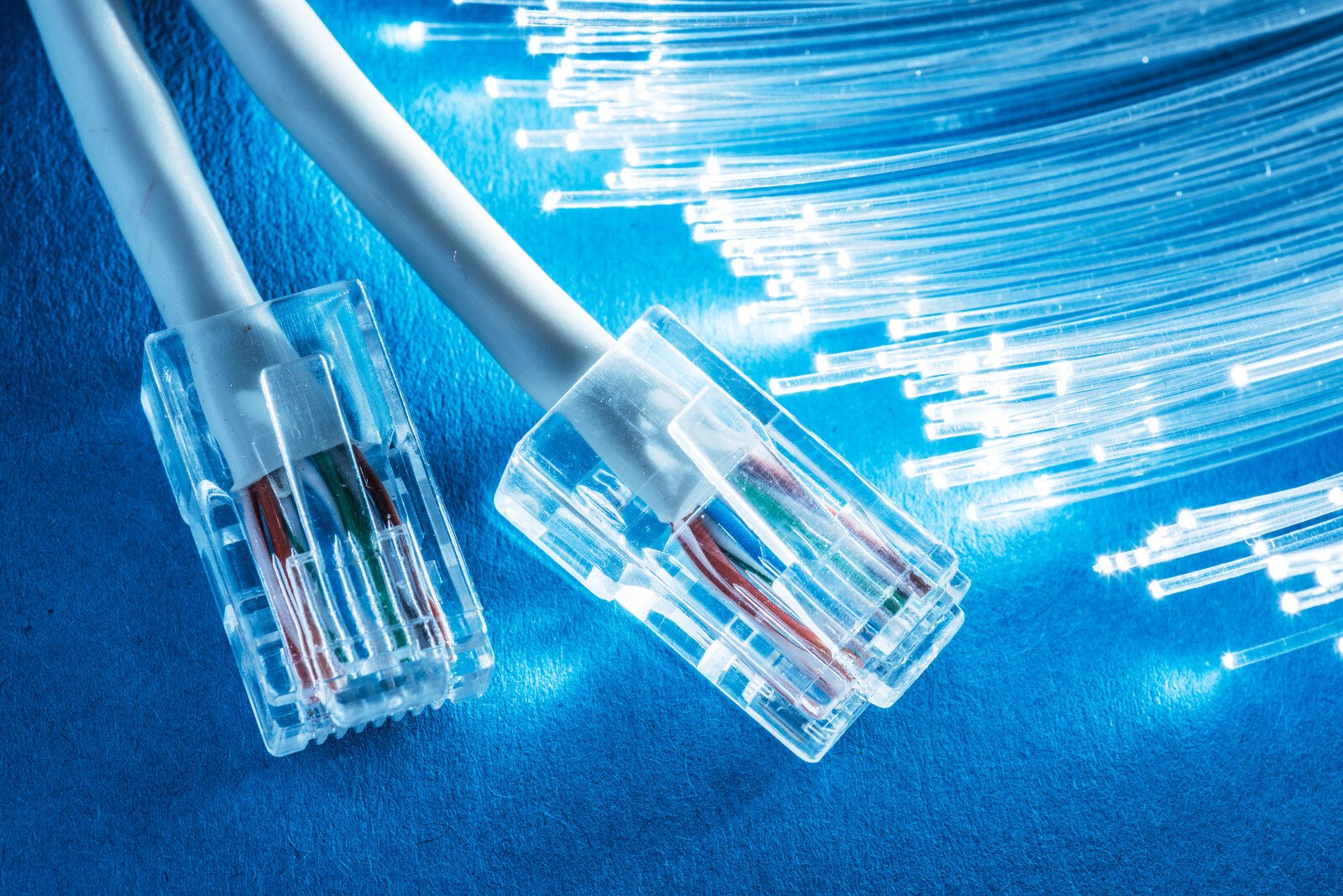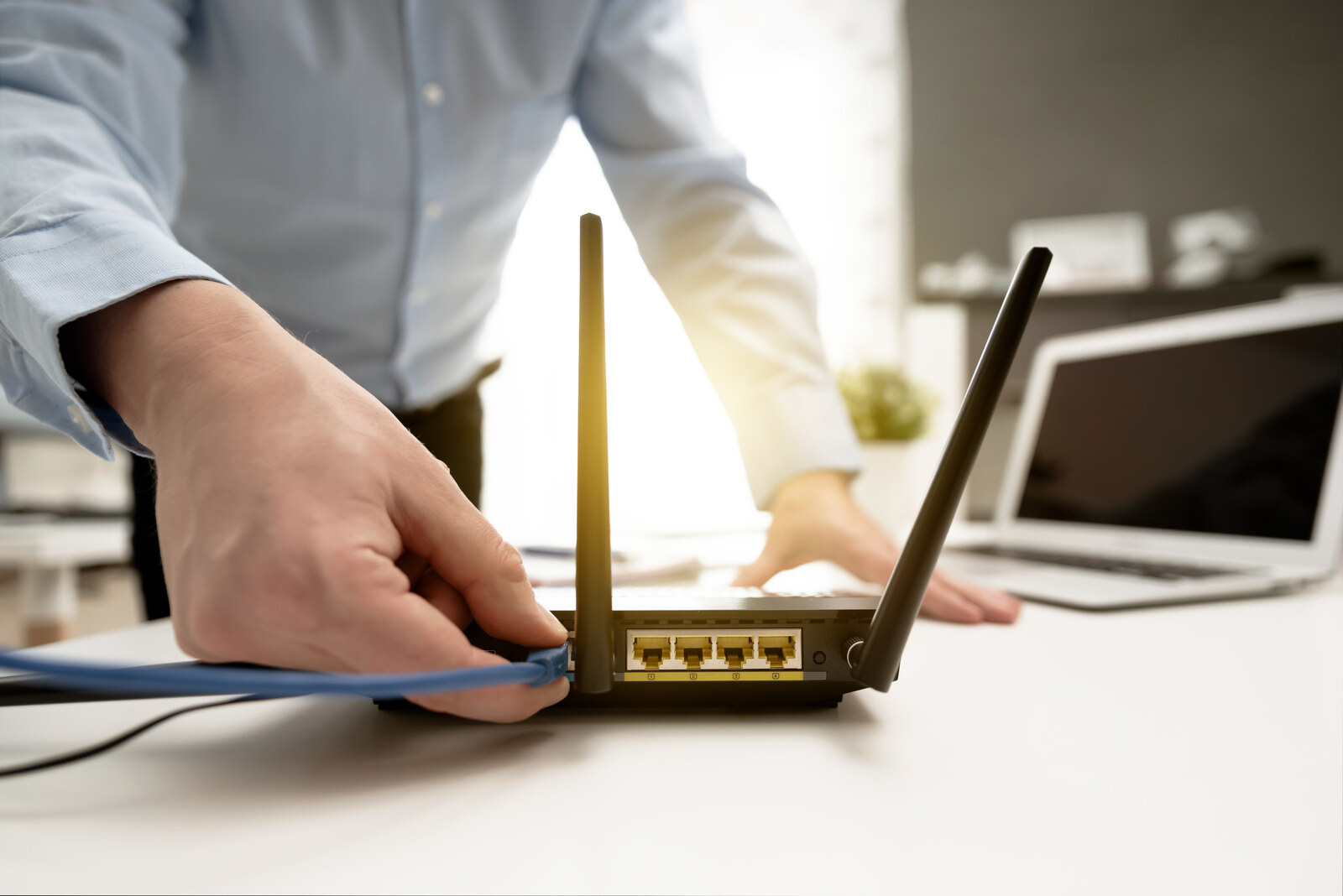When you're planning or upgrading your business network, picking the right type of fiber optic cable matters more than you might think. It affects everything from performance and scalability to how much you’ll spend upfront – and down the road.
Two of the most common cable types you'll hear about when implementing a fiber network are single mode and multimode fiber. They both have their sweet spot, and knowing which one fits your organization’s needs can help you make the right choice. Read on for a breakdown of the difference between single mode and multimode fiber, how they work, and which environments benefit most from each.
What Is the Difference Between Single Mode and Multimode Fiber?
The main difference between these fiber options comes down to how light travels through the cable.
Single mode fiber has a very narrow core (around 8–10 microns in diameter), so it only allows one light signal (or "mode") to pass through at a time. It allows just one light signal – typically lasers – to pass through at a time. This keeps the signal tight and strong, making it ideal for long distances and high-speed transmission.
Multimode fiber has a larger core (typically 50 or 62.5 microns) and can carry multiple light signals, usually LEDS, at once. While that’s great for short distances, those overlapping signals can bump into each other and cause distortion over longer distances.
Single Mode Fiber vs Multimode Fiber: Technical Comparison
Here’s a quick breakdown to help you see the biggest differences between the two:

Applications for Single Mode Fiber
Single mode fiber is built for speed and distance. If your network stretches over long distances or requires superior performance at all times, this is often the right choice.
Here's where you'll typically see it put to work:
- Telecom and service provider backbones: Carriers rely on single mode fiber to span cities and connect regional hubs.
- Data center interconnects: Enterprises with multiple data centers often use single mode links to maintain high-speed communication between locations.
- Enterprise wide-area networks (WANs): For companies with campuses or satellite offices, single mode fiber ensures reliable long-distance performance.
- Municipal and metropolitan networks: Citywide fiber deployments use single mode fiber to build reliable, scalable public infrastructure.
- Utilities and critical infrastructure: Organizations that can’t afford any signal degradation choose single mode for its low latency and strong signal integrity.
If your data needs to travel long distances fast and without interruption, single mode fiber is built for the job.
Applications for Multimode Fiber
Multimode fiber is often the go-to for shorter runs. It handles high-speed data well over modest distances and is typically easier on the budget.
Common multimode applications include:
- Local area networks (LANs): Within buildings or across floors, multimode fiber can affordably handle high-speed internal traffic.
- Data centers (intra-facility): Multimode fiber is often used to connect servers, switches, and storage arrays across short distances.
- Audio/video systems: Commercial environments with integrated AV systems benefit from multimode's support for high-bandwidth video.
- Industrial automation: Factories and plants use multimode fiber for short, rugged connections between equipment.
- Campus networks: It can support building-to-building connections within a single site or institution, provided distances remain short.
For most in-building or short-range projects, multimode fiber delivers the speed you need without overcomplicating things.

Pros and Cons of Single Mode Fiber
Single mode fiber supports much longer distances than multimode fiber can without compromising signal quality. The narrow core and laser light combination deliver extremely high bandwidth with minimal signal loss, making it excellent for future-proofing your network infrastructure.
Businesses that need consistent performance across miles of cable – like ISPs, government agencies, or large corporations with distributed operations – often find single mode fiber to be the smarter long-term investment.
However, single mode fiber does come with some trade-offs you should consider:
- Higher equipment costs can be a barrier for smaller businesses or organizations with tight IT budgets.
- Installation requires more precision, often necessitating skilled technicians to ensure optimal signal performance.
- May be overkill for short runs since it delivers more performance than needed while costing more than multimode alternatives.
- Maintenance can be more complex, requiring specialized equipment and knowledge for troubleshooting and repairs.
Pros and Cons of Multimode Fiber
Multimode fiber is generally easier to install and less expensive, especially for short-distance applications. The larger core simplifies connections and reduces the need for precise alignment, and the use of LED light sources keeps equipment costs manageable.
For in-building networks, SMBs, and organizations focused on internal connectivity, multimode often delivers the most value.

That said, multimode fiber also has its limitations:
- Signal degradation increases over distance due to modal dispersion, which limits its effectiveness for longer runs.
- Bandwidth capacity is more limited compared to single mode, which could create bottlenecks as network demands grow.
- May require future upgrades as businesses scale, potentially leading to costly infrastructure replacements down the road.
- Distance limitations can restrict network design flexibility and expansion options.
Multimode vs Single Mode Fiber in Real-World Scenarios
Choosing between single mode and multimode fiber will depend on several factors that vary from one business to another, but here are some important ones to consider:
Distance Requirements
Single mode fiber is the clear winner for long-distance deployments, as it can support runs up to 100 kilometers or more without signal repeaters. Multimode works best for distances under 2 kilometers, making it great for most intra-building and campus applications.
Budget Constraints
Multimode fiber uses less expensive transceivers and network equipment. If your network needs to make multiple short-distance connections, multimode will likely be more cost-effective overall.
Bandwidth Needs
Single mode supports higher bandwidth and data rates, which are must-haves in high-throughput environments like data centers or applications requiring remote server access. Multimode provides good bandwidth for most business applications, but may become limiting as demands grow.

Installation and Maintenance
Multimode systems are typically easier to install and maintain. The simpler light source and alignment requirements mean fewer headaches for IT teams or external contractors.
Scalability
If you plan to scale or need headroom for future bandwidth demands, single mode gives you more flexibility. It’s easier to future-proof a network with single mode fiber, even if it costs more upfront.
Choose the Right Fiber for Your Network Strategy With Fatbeam
There’s no one-size-fits-all answer to the single mode vs multimode debate. It all depends on how your business runs and where it’s headed. Keep in mind that if you need top-tier speed across long distances, single mode fiber could be your best bet. If you’re focused on internal connections and want something quick, reliable, and cost-effective, multimode will likely fit the bill.
At Fatbeam Fiber, we deliver fiber internet that’s built for reliability, scalability, and service. Whether you need enterprise-grade connectivity for your organization or reliable residential internet for your community, we offer scalable single mode and multimode fiber solutions backed by responsive support and a network you can count on.
Contact us today to get started with a future-ready fiber network that keeps your business connected and competitive.


